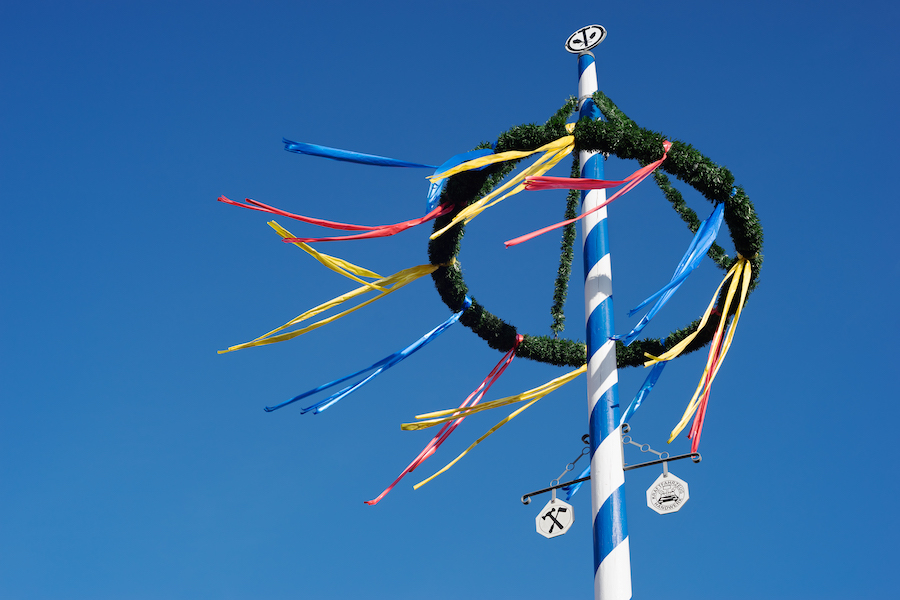Celebrating May Day
The first day of May is significant for multiple reasons around the world. For some, it’s May Day, and represents the end of winter and beginning of summer. In many countries it’s also Labor Day, and serves as both a day off work and a day of demonstration. If you travel to another country on or around May Day, here are some experiences you may encounter.
May Day
May Day has been celebrated for centuries across Europe. In Ireland, Scotland, and Rome, early celebrations “were intended to improve crop growth and to help livestock produce more offspring.” This pagan tradition eventually was secularized as Christianity spread, and in some areas the holiday is associated with different saints.
Historically, festivals included dancing around a maypole and crowning a May Queen who oversaw the events. The Washington Post describes the activity: "In olden days, people would dance around a pole cut from a birch tree, holding the end of a ribbon or streamer in their hand. The other end of the ribbon was attached to the top of the pole, and dancers moving in patterns around the pole wove the ribbons into colorful designs."
Some countries, like Britain and Germany, still uphold these traditions, but over the years, they have moved away from having a basis in agriculture and more toward being an opportunity for communities to get together and enjoy the warmer weather. In Scotland, the holiday is part of the Beltane Fire Festival, a celebration of dancing, music, and fire based in ancient Celtic traditions. The Finnish celebrate Vappu on May 1st, a colorful and "raucous occasion, punctuated with sima (a type of fruity mead popular since the 18th century in Finland), munkki (doughnuts), tippaleipä (funnel cakes), haalarit (student overalls), and ylioppilaslakki (the hat that is awarded after finishing upper-secondary school)." Germans both climb and attempt to steal each others' May trees (or maypoles), as well as light bonfires and dance.
Labor Day
For the majority of the world, May 1st is Labor Day, or International Workers’ Day. This began in the late 1800s as laborers and unions demanded more rights such as shorter work days. Though it is not Labor Day in the United States—in part due to its connection to the 1886 Haymarket affair in Chicago, and the subsequent protests that followed each year on May 1st—most countries see both a day off of work, as well as demonstrations and protests. In France, for example, a country not unfamiliar with labor protests, the day is viewed as a "designated day of action," and trade unions will often take to the streets to demonstrate for workers' rights and other human rights issues.
The day has become especially prominent across Asia. In 2018, rallies took place in countries such as Cambodia, the Philippines, Taiwan, and South Korea, among others. Participants in these events were marching for issues such as raising the minimum wage and better working conditions. In some countries, demonstrations can turn violent. Cambodian protesters, about 2,000 in total, were stopped by riot police last year as they marched for higher pay, and ten protesters in South Korea were injured in a sit-in over a statue being erected in Busan.
Stay Aware
If you are planning to travel abroad this time of year, keep in mind what May Day or Labor Day might mean in the country you're visiting. Is it a bank holiday, meaning many businesses may be closed? Will there be spring festivals that you can take part in? On the other hand, you may need to be aware of demonstrations occurring that day, and be cautious about getting swept up in any activity that could lead to violence and arrests. No matter what, though, it's a chance to experience a holiday that much of the rest of the world observes for any number of reasons, a holiday that is largely forgotten here in the United States.
Have you experienced May Day or Labor Day abroad? Tell us about your experiences over on our Facebook or Twitter.
Resources
- What is May Day all about?
- May Day — Holidays Around the World
- Beltane Fire Festival
- Your Guide to Vappu
- Germany's Most Bizarre May 1st Traditions
- Why International Workers' Day Isn't A Big Deal In The US
- What May Day really means to the French
- May Day rallies around the world
- How workers around the world are celebrating May Day
